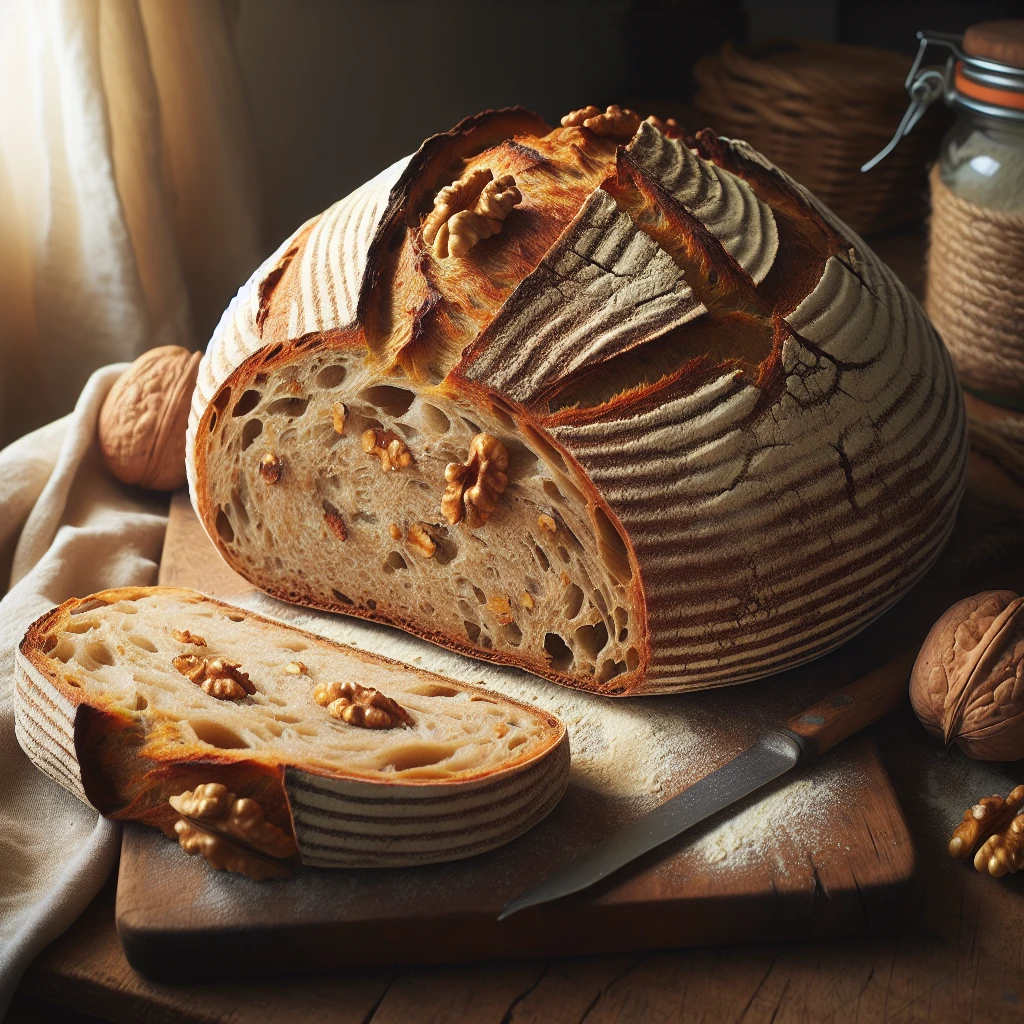
This Rustic Walnut Sourdough Bread brings together the earthy richness of toasted walnuts with the tangy depth of sourdough. It's perfect for a cozy breakfast or an artisan addition to your bread basket. Let's dive into making this delightful loaf!
All-purpose flour provides a versatile base, giving the bread structure and a balanced crumb. Whole wheat flour adds a hearty texture and enhances the nutty flavor profile. Water is the liquid gold that hydrates the flour, allowing gluten to develop. Sourdough starter, when active and bubbly, acts as the natural leaven, infusing the dough with its unique tang. Salt not only enhances flavor but also strengthens the dough structure. Finally, walnuts bring a delicious, toasted crunch to each bite.
This bread is divine with a smear of soft butter and honey. Try it alongside a creamy pumpkin soup for a fall dinner, or use it for an elevated turkey and cranberry sandwich. It's also a fantastic base for avocado toast topped with fresh herbs.
Start by mixing 3 cups of all-purpose flour and 1 1/2 cups of whole wheat flour with 1 1/2 cups of water in a large bowl. Stir until there's no dry flour left, then let it rest for about 30 minutes. This autolyse step helps gluten development without much effort from your side.
Next, add 1/2 cup of your active sourdough starter and 1 1/2 teaspoons of salt to the dough. Mix everything thoroughly until well incorporated. Now, fold in 1 cup of toasted and chopped walnuts, ensuring they're evenly dispersed throughout the dough.
Now it's time for some gentle work. Perform a series of stretch and folds—every 30 minutes for the next 2 hours. This means lifting one side of the dough and folding it over to the other side, rotating the bowl slightly each time. It strengthens the dough without needing to knead aggressively.
Once you've done your stretch and folds, let the dough rise at room temperature until it doubles in size. This might take 4 to 6 hours, depending on the temperature of your kitchen. When it's ready, shape the dough into a boule (a round loaf) and place it into a floured banneton or a bowl lined with a clean, floured kitchen towel.
Cover your dough and pop it into the refrigerator for an overnight rest, known as cold retardation. This enhances the flavor and makes it easier to handle before baking.
The next day, preheat your oven to 475°F with a Dutch oven inside. Once it's hot, carefully transfer your dough into the Dutch oven. Score the top with a sharp blade to allow it to expand while baking. Cover with the lid and bake for 20 minutes, then remove the lid and bake for another 25 minutes until your loaf is golden brown.
After baking, let your bread cool on a wire rack before slicing. This cooling period is crucial as it allows the crumb to set properly.